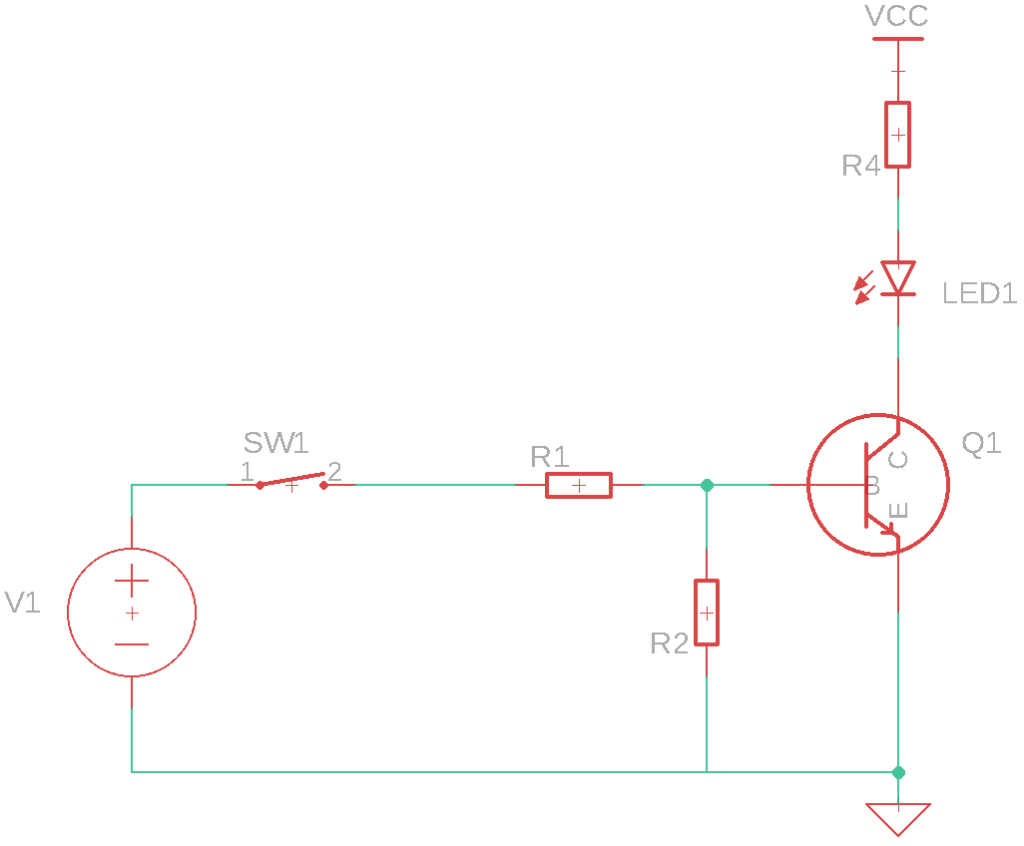Elevate your design and manufacturing processes with Autodesk Fusion
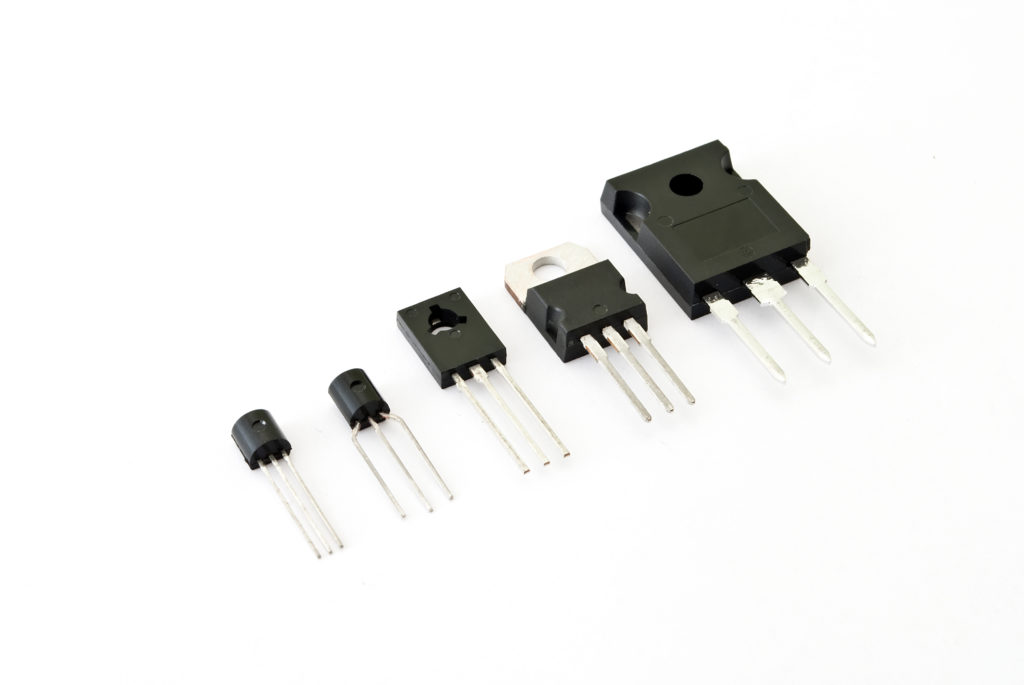
Transistors are one of the most commonly used elements in electronic circuits. Their ease of use and simple working principle is what makes them popular among electronic designers. They mainly perform two functions: switching and amplification. You just need a few calculations to introduce this three-legged device into your next project and enable it to function correctly. So, let’s look at transistors in detail and see how you can use one in your upcoming electronic project. By the end of this blog post, you will have a solid understanding of the internal structure of a transistor, its different types, and how to incorporate them in electronic circuits.
How important are transistors, anyway?
Transistors are used in almost every electronic circuit. Moreover, they are used inside Integrated Circuits (IC), logic gates (AND, OR, NOT, XOR, etc.), and many other electronic components. On average, an IC contains 42 million transistors, and an iPhone 11 houses 8.5 billion transistors.

What does a transistor’s internal structure look like?
Transistors are made of a semiconductor material such as silicon, germanium, and others. The addition of impurities into semiconductor wafers allows transistor manufacturers to create n-type and p-type regions. This process is called doping.
Doping allows a semiconductor wafer, such as silicon, to divide into two regions; n-type and p-type. What are these regions, and what is the difference between them? The number of positive and negative charges present in that region is what sets them apart. Negatively charged particles are called electrons, and the positively charged areas are called holes because the absence of an electron creates a “hole.” In an n-type region, the majority carriers are electrons, while in a p-type region, the majority carriers are holes.
A transistor is made by sandwiching a p-type region between two n-type regions, and vice versa. NPN and PNP are the two types of transistors, based on their internal structure. The three terminals of a transistor originate from each of the three doped regions present inside it. The middle zone is the base terminal, while the other two are emitter and collector terminals.
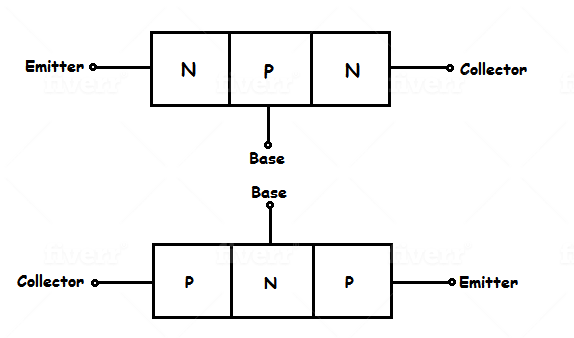
How Do Transistors Work?
Transistors work as either amplifiers or switches. When working as an amplifier, a transistor takes a small input current and amplifies it to produce a larger output current. On the other hand, while working like a switch, a low input current at the input terminal switches on and drives a larger current at the output terminal. Both transistor configurations are advantageous, which makes them very popular in electronic circuit design.
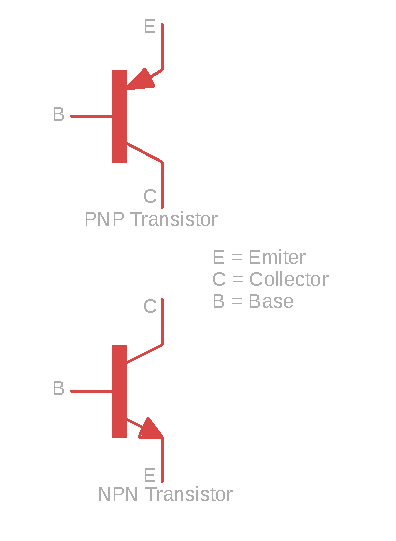
If we connect the negative terminal of a battery to the n-type region (emitter), and the positive terminal to the base (p-type region), a current will flow from the base to the emitter. Similarly, if we put the collector (n-type region) at a higher positive potential than the base and emitter, an emitter current will generate and flow towards the collector. The collector-emitter current, ICE, is controlled through the base voltage.
The switching and amplification modes are achieved by providing the right base, collector, and emitter voltages. Let’s look at some basic transistor circuits to understand how amplification and switching occurs.
Transistor Configurations
There are three main transistor configurations that are widely used in electronic circuit design:
- Common Emitter
The common-emitter configuration works as an amplifier, as well as a switch. The input signal is applied at the base, and the output signal is measured at the collector terminal. The emitter is common to both the input and output terminals since the input signal is applied across the base-emitter terminals, while the output is collected across the collector and emitter terminals. The circuit below shows how you can build a common-emitter amplifier circuit. We are considering NPN transistors in these circuit examples.
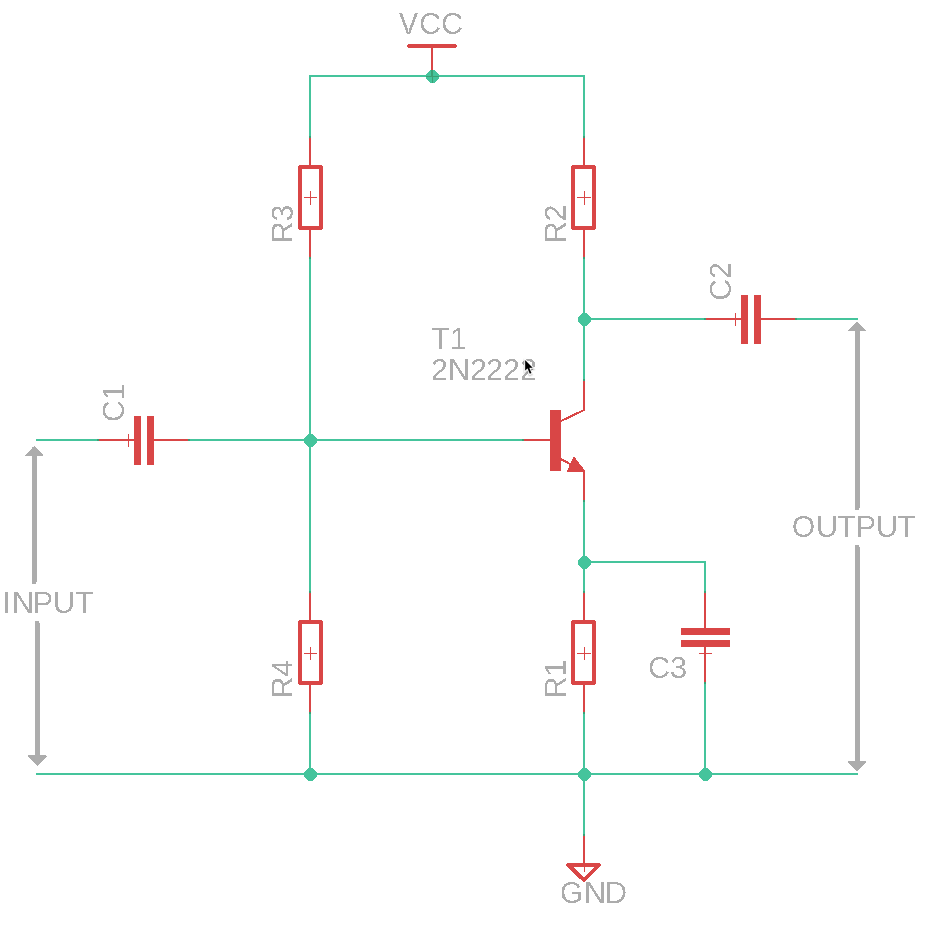
- Common Collector
In this configuration, the input signal is applied at the base while the output is collected from the emitter terminal. The collector is common to both the input and output terminals; you need to ground this terminal while building your common-collector circuit. This configuration is mostly used as a voltage buffer circuit, a switch, and an impedance matching circuit. The circuit below shows a basic implementation of the common-collector circuit.
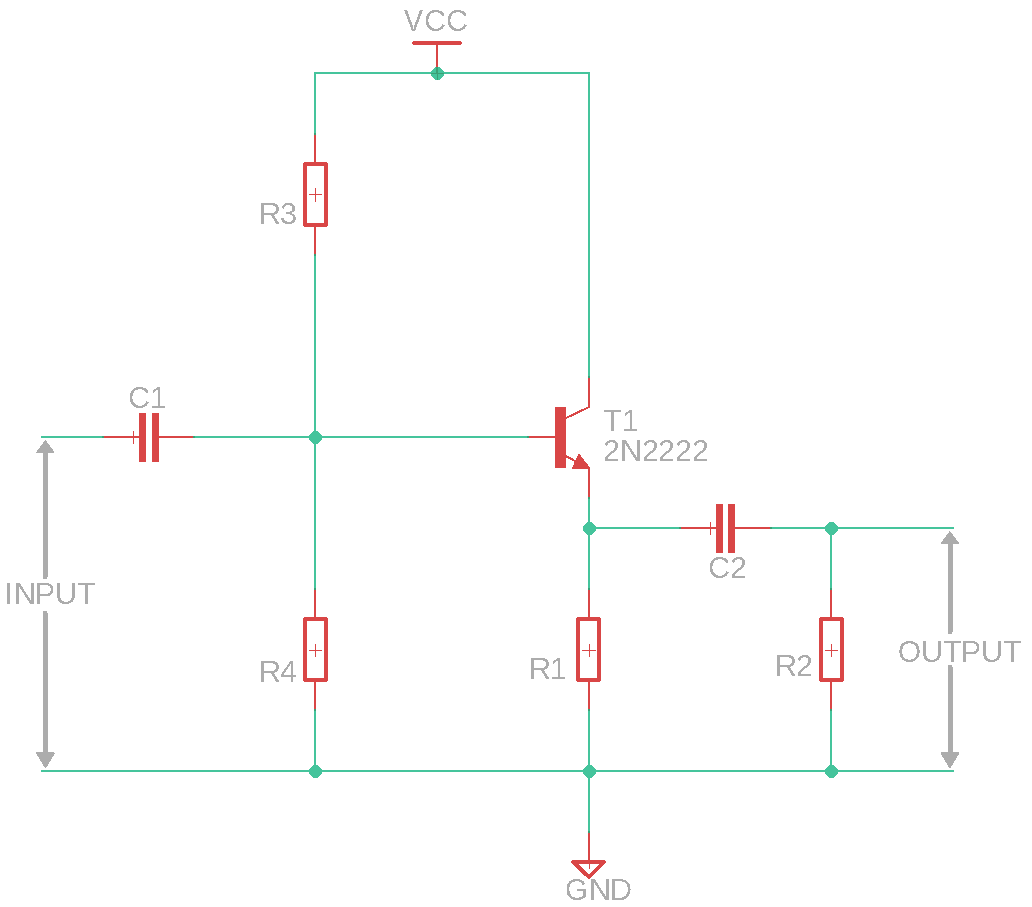
- Common Base
As you might have already figured out, the base terminal is common to both the input and output signals. The emitter acts as the input terminal, and the output signal is generated at the collector. The base terminal is grounded so that it is common to both of the other terminals. The common-base configuration is mostly used for impedance matching. The circuit below shows how you can implement a common-base amplifier circuit.
Among the three transistor configurations, common-emitter is the most popular one. This is mainly because of its voltage gain, which is sufficient for most transistor applications compared to the other two configurations’ gains.

Transistor as a Switch
A switch is an electronic component that allows you to make or break a connection within a circuit. Breaking a connection is termed as an open-circuit (OFF), while a closed-circuit (ON) is when a connection is made. The most popular application of transistors is to use them like a switch. How do the three terminals of a transistor function when it acts as a switch?
A transistor works in two modes – saturation and cutoff. When it works as a switch, it turns off when it is in cutoff mode, since no collector current flows through it, and it turns on when working in saturation mode. Collector current is generated when an input signal is present at the base; this is when the transistor is ON. When there is no input signal, the transistor shifts into the cutoff mode and turns OFF with no current flowing through the collector.
Here is a basic circuit where an NPN transistor works as a switch. An input voltage is applied at the base. You need to keep in mind that silicon p-n junction devices need a voltage higher than 0.7V to function. Hence, your base-emitter voltage (VBE) must be higher than 0.7V for the transistor to switch on. The resistor at the input determines the amount of voltage present at the base.
When VBE is greater than 0.7 volts, base-emitter and base-collector junctions are forward biased, resulting in maximum collector current. This is when your transistor is in saturation mode and acts as a closed-circuit. As a result, the LED present at the output will turn ON.
Similarly, when the input is grounded, the base-emitter voltage would be less than 0.7 Volts, resulting in reverse-biased base-emitter and base-collector junctions. Hence, no current would flow through the collector, and the transistor would be in a cutoff mode, resulting in the output LED turning OFF.
Transistor Application: Oscillator
A very common electronic circuit is the oscillator used in different applications such as light-controlled LEDs, signal processing, and microcontroller oscillator clocks. Using a pair of transistors, we can quickly build an oscillator circuit, as shown in the diagram below.
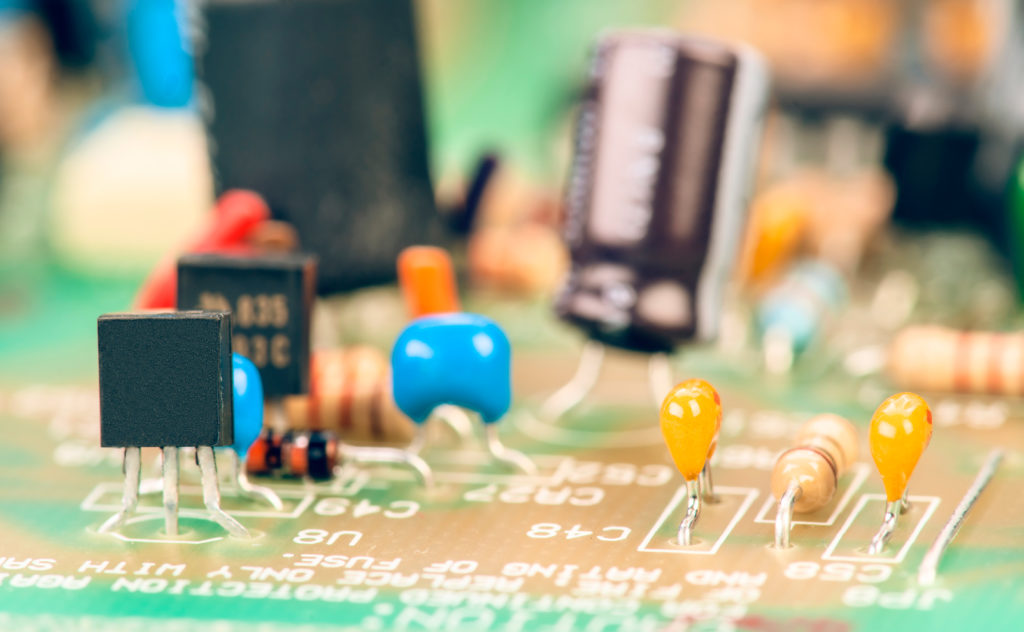
The capacitors present in the oscillator circuit play the most crucial role. When one capacitor charges, it turns the transistor on until it discharges. Meanwhile, the second capacitor charges up and turns on the second transistor when the first one switches off. This generates an oscillating pulse since the transistors are connected in a mirror configuration, with opposite polarities.
You can alter the frequency of oscillation by modifying the capacitor and resistor values according to your needs. All you need is a pair of transistors, a pair of capacitors, and a few resistors to build your multipurpose oscillator circuit.

Curious to learn TK? Explore Fusion 360’s electronics capabilities, including TK and TK by downloading a free trial.
Autodesk Fusion 360 offers a variety of tools for engineers, including 3D PCB design, comprehensive data sets, and more. What are you waiting for? Get started on your next electronics project in Fusion 360 today.
